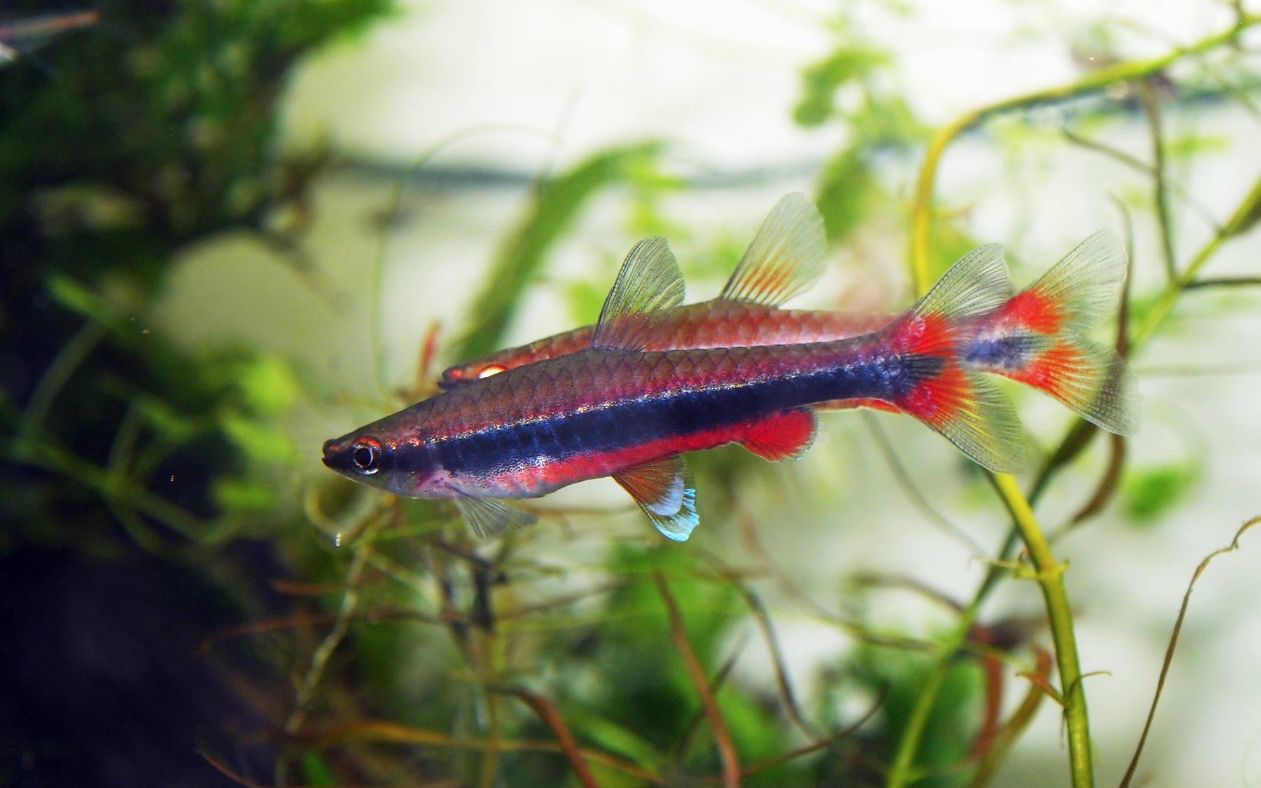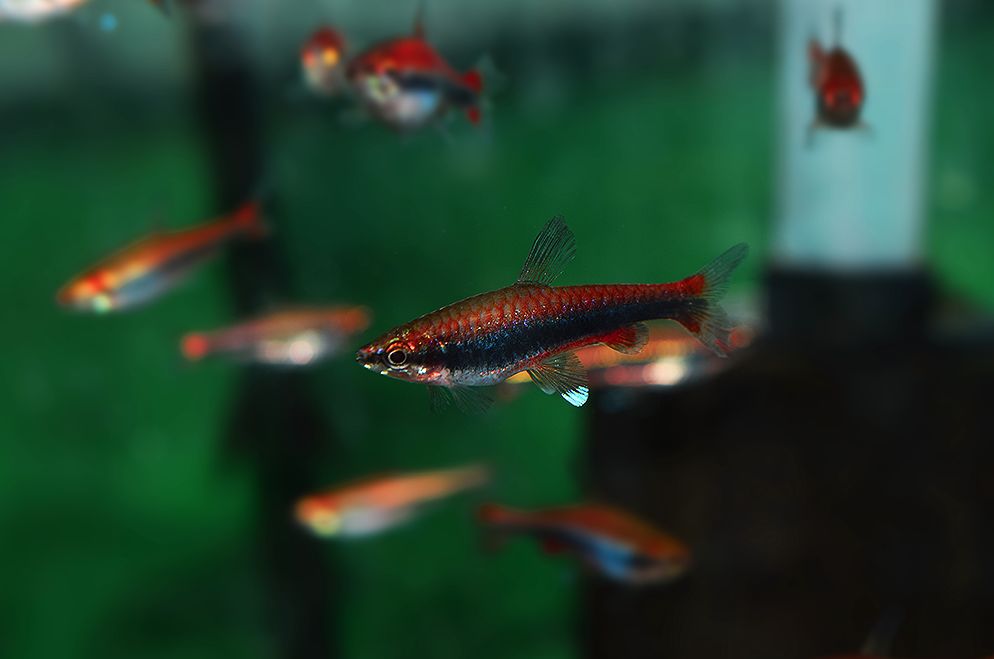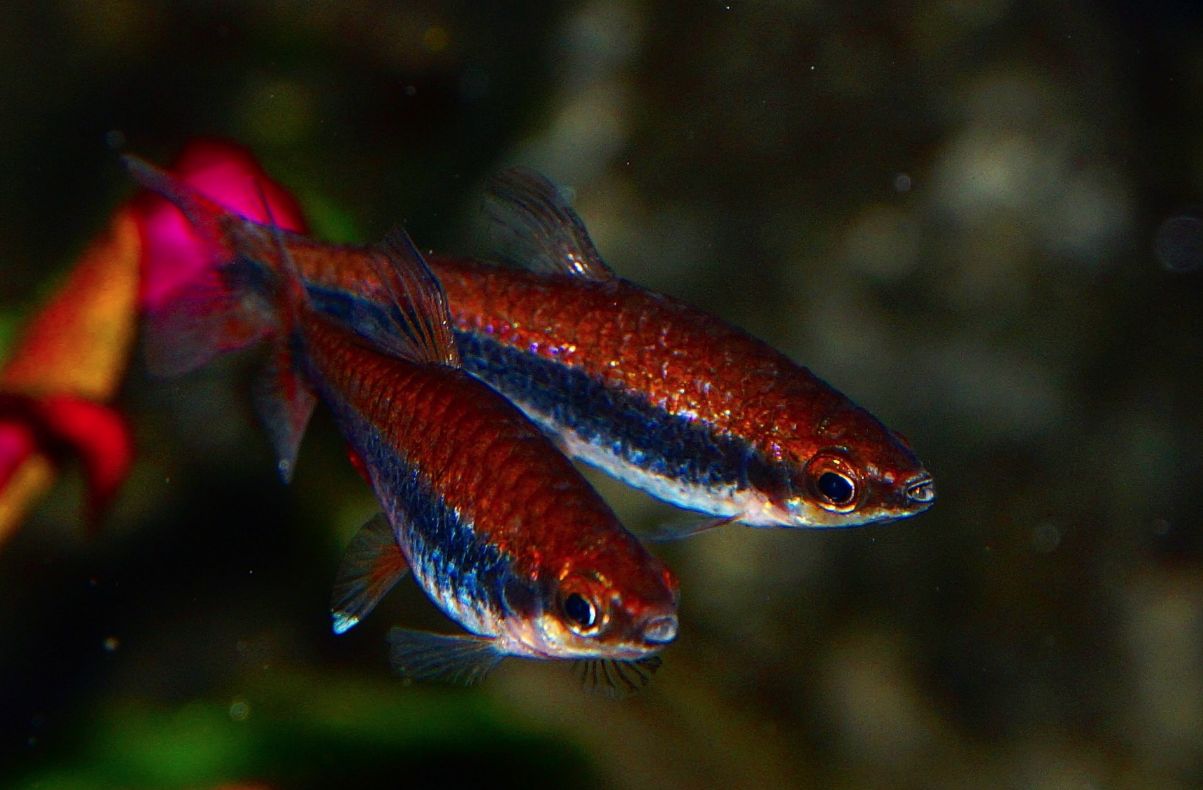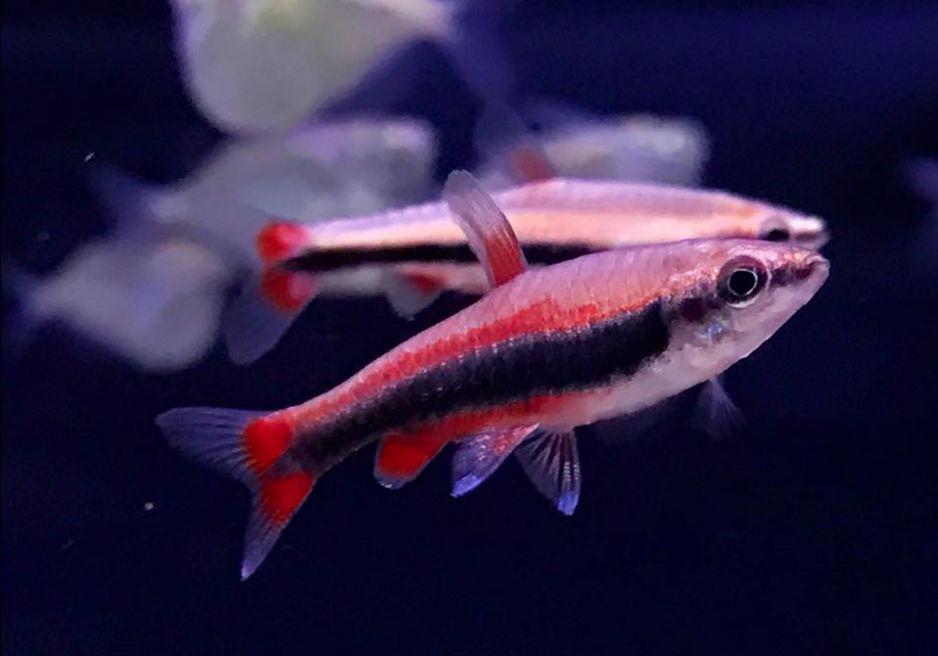Nannostomus beckfordi, commonly known as Beckford’s pencilfish, is a species of pencilfish that is native to South America. Beckford pencilfish (Nannostomus beckfordi) is a very small an peaceful tank fish. These fish are generally peaceful and can be kept in a community aquarium with other small, non-aggressive fish. The article has information on how to keep, feed the fish and what are the best tank mates.

Contents
Habitat in the wild
As for the beckford pencilfish habitat, this fish kind is widely spread in the rivers of Guyana, Surinam and French Guiana as well as in Amazon River basin on the East and in Amapa and Para states, Brazil.
Golden pencilfish can also be encountered in the Madeira River, bottom and middle Amazon River basin up to the Rio Negro and the Orinoco River in Venezuela. At that, the fish appearance to a great extent depends on its habitat and some fish populations have been considered as separate genus of the fish till quite recently.
Golden pencilfish can be found in river tributaries, small rivers and wetland. The fish especially likes thickly planted areas with lots of snags and thick layer of fallen leaves on the bottom. Though some fish species are still being exported directly from the wild, the vast majority of pencilfish sold in pet shops are grown on a commercial basis.

Description
Nannostomus genus is from Lebiasinidae family and it is closely related to Characinidae representatives. The Beckford pencilfish was described for the first time by Günther in 1872. The fish genus has over 15 kinds, many of which are endemic.
All the fish kinds of this genus have one thing in common – they have a black or brown horizontal stripe along their body. Nannostomus espei is the only exception in this case, since this fish has five large spots instead of the stripe.
Beckford’s pencilfish typically reaches a maximum length of around 2 inches (5 centimeters), although in some sources you can see information that maximum body length of the fish is 6.5 cm. This is the average size for adult individuals of this species. It’s important to note that there can be some variation in size among individuals, with some fish being slightly smaller or larger than the average. When providing care for Beckford’s pencilfish, it’s crucial to consider their small size and ensure that the tank setup, tank mates, and food provided are suitable for their needs.
The golden Beckford’s lifespan isn’t long – up to 5 years, but usually it’s about 3 years long.
Beckford’s pencilfish has an elongated, slender body with a distinctive shape, resembling a pencil. The males are more colorful and have a bright red or orange stripe running horizontally along their bodies, starting from the head and extending towards the tail. The females, on the other hand, are paler in color and lack the vibrant stripe.
| Characteristic | Description |
|---|---|
| Common Name | Beckford’s pencilfish, golden pencilfish, red beckford’s pencilfish, red pencilfish |
| Scientific Name | Nannostomus beckfordi |
| Origin | South America (Guyana, Suriname, French Guiana) |
| Size | Up to 2 inches (5 cm) |
| Body Shape | Elongated and slender |
| Coloration | Males: Bright red or orange stripe; Females: Paler coloration, lack stripe |
| Temperament | Peaceful and non-aggressive |
| Tank Size | 10 gallons or larger |
| Water Temperature | 72-82°F (22-28°C) |
| pH Range | Slightly acidic to neutral (around 6.0-7.0) |
| Water Hardness | Soft to moderately hard |
| Tank Setup | Well-planted with hiding spots |
| Lighting | Subdued lighting preferred |
| Diet | Omnivorous; accepts flake, pellets, live, and frozen foods |
| Compatibility | Peaceful community fish; avoid larger, aggressive species |
| Breeding Difficulty | Moderate |
| Breeding Behavior | Courtship dance between male and female; adhesive eggs attached to surfaces |
| Lifespan | 3-5 years (approximate) |
Difficulties in keeping
This isn’t a large fish, so it can’t be kept is a small tank. Beckford’s pencilfish is not very demanding, but it requires some experience to keep it successfully in a tank. Thus, the fish can’t be recommended for beginner aquarists, although I can’t say that this is a very challenging fish species to keep.

Care and keeping in a tank
In terms of care, Beckford’s pencilfish prefer a well-planted aquarium with plenty of hiding spots. They appreciate subdued lighting and clean, well-maintained water conditions.
In a tank Beckford pencilfish usually swims near the water surface or in the middle water layer. It’s desirable to have some floating plants on the tank water surface (such as water lettuce), among these plants the fish feels comfortable and safe. As for other tank plants, you can use Vallisneria – both gigantea and common Vallisneria. In its thickly growing leaves fish feels secure and it can even lay eggs there. However, don’t forget about some free space for the fish to swim in the tank.
As for the bottom substrate the fish doesn’t care much about it, though it looks much better on a black background which emphasizes the fish coloring.
Optimal tank water parameters are the following: temperature 72 – 78 °F (22 to 26 °C), pH: 5.0 – 8.0, water hardness 5-20 dGH. Nevertheless, the fish adapts qiute well to various water parameters.
It is important to keep the tank water clean, so weekly water renew (up to 15%) is a must in this case. Golden pencilfish doesn’t appreciate strong water flow and renewing of sufficient amount of water. The tank should be covered with a cover glass, since the fish may jump out of it.
Diet
Pencilfish are omnivorous and generally have adaptable feeding habits. The food should be small grained, since has a small mouth even for its size. The Beckford pencilfish also eats dry food served as pellets or flakes that stay on the water surface for a long time, but this is true for those fish species, which weren’t caught in the wild. Commercially available staple foods specifically formulated for tropical fish provide essential nutrients and are often a convenient option for feeding pencilfish.
As for the live food, Beckford’s pencil fish eagerly eats brine shrimps, daphnia, drosophila, wiggle-tail, tubifex and small sized plankton.
Frozen foods like bloodworms, daphnia, brine shrimp, and tubifex worms are excellent alternatives to live foods. They retain much of the nutritional value and can be conveniently stored in a freezer.

Tank mates
The Beckford pencilfish is calm and peaceful and can coexist with a variety of small, non-aggressive fish species.
Here are some suitable tank mates to consider:
- Tetras: Small tetra species like neon tetras, ember tetras, or glowlight tetras can make good tank mates for Beckford’s pencilfish. They share similar water parameters and peaceful nature.
- Rasboras: Species like harlequin rasboras or phoenix rasboras are compatible with Beckford’s pencilfish. They are peaceful, active swimmers, and add vibrant color to the aquarium.
- Corydoras Catfish: Peaceful bottom-dwelling catfish like various Corydoras species (e.g., panda corydoras) can be suitable tank mates. They help keep the bottom of the tank clean and are generally compatible.
- Dwarf Gouramis: Dwarf gouramis are peaceful and colorful fish that can coexist with Beckford’s pencilfish. Ensure you have ample space and hiding spots to prevent any territorial issues.
- Guppies and Endlers: These small livebearers are compatible with pencilfish. They come in various colors and add movement to the aquarium. Ensure the guppies are not overly flashy, as they may attract aggression from the pencilfish.
- Small Loricariid Catfish: Certain small species of plecos, such as the bristlenose pleco (Ancistrus sp.), can work well as tank mates. They help with algae control and are generally peaceful.
Because of its size you shouldn’t keep fish together with large, aggressive and predator fish species. Even just too active fish species like tiger barb, for example, won’t do as tank mates as well.
The fish gets along well with dwarf cichlids, for example, with Apistogramma ramirezi. This kind of fish doesn’t swim in upper water layers while Beckford’s pencilfish doesn’t eat its juveniles. Rasboras and various small sized characines can be considered as good tank mates for the fish.
When buying fishes get 10 species and more. Since, the more species are in the school, the more interesting is to observe their behavior, the brighter is their coloring and their intraspecific aggression inside the school decreases as well.
Gender differences: male vs female
Males have brighter coloring, especially during their spawning period. The females have a pronounced rounded abdomen.